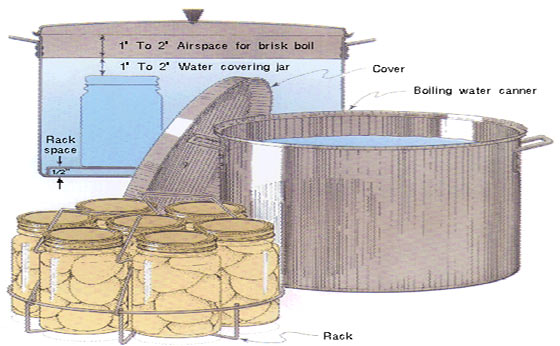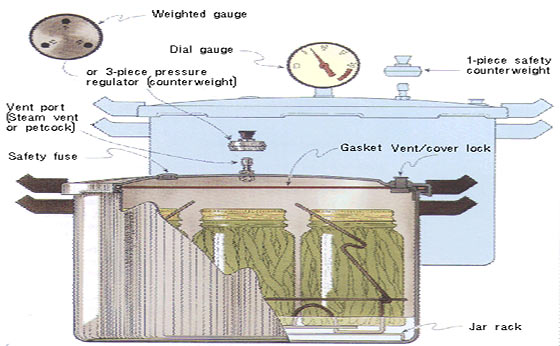Are you interested in preserving food for later? Then you should become familiar with these five methods of home food preservation…

5 Methods of Home Food Preservation
CANNING
…is the process in which foods are placed in jars or cans and heated to a temperature that destroys microorganisms and inactivates enzymes. This heating and later cooling forms a vacuum seal. The vacuum seal prevents other microorganisms from decontaminating the food within the jar or can.
Acid foods such as fruits and tomatoes can be processed or “canned” in boiling water (also called the “water bath method”), while low acid vegetables and meats must be processed in a pressure canner at 240°F (10 pounds pressure at sea level).
FREEZING
…reduces the temperature of the food so that microorganisms cannot grow, however many will survive. Enzyme activity is slowed down, but not stopped during freezing.
DRYING
…removes most of the moisture from foods. Thus microorganisms cannot grow and enzyme action is slowed down. Dried foods should be stored in airtight containers to prevent moisture from rehydrating the products and allowing microbial growth.
PICKLING
…is another form of canning. Pickled products have an increased acidity that makes it difficult for most bacteria to grow. The amount of acid present is very important to the safety of the product. Pickled products are also heated in jars at boiling temperatures to destroy any other microorganisms present and form a vacuum in the jar.
JAMS AND JELLIES
…have a very high sugar content. The sugar binds with the liquid present making it difficult for microorganisms to grow. To prevent surface contamination after the product is made and thus possible yeast or mold growth, these are either canned, frozen, or refrigerated.
There are a wealth of resources available to learn how to properly utilize any of these food preservation techniques, including the internet, books, experienced users, and of course… you’ll need the equipment.
If you haven’t already, challenge yourself to try any of these methods so that you can store extra food while taking advantage of garden harvests or store sales. Not only will you enjoy these foods off-season, but you will be better prepared.

Source: modernsurvivalblog.com
